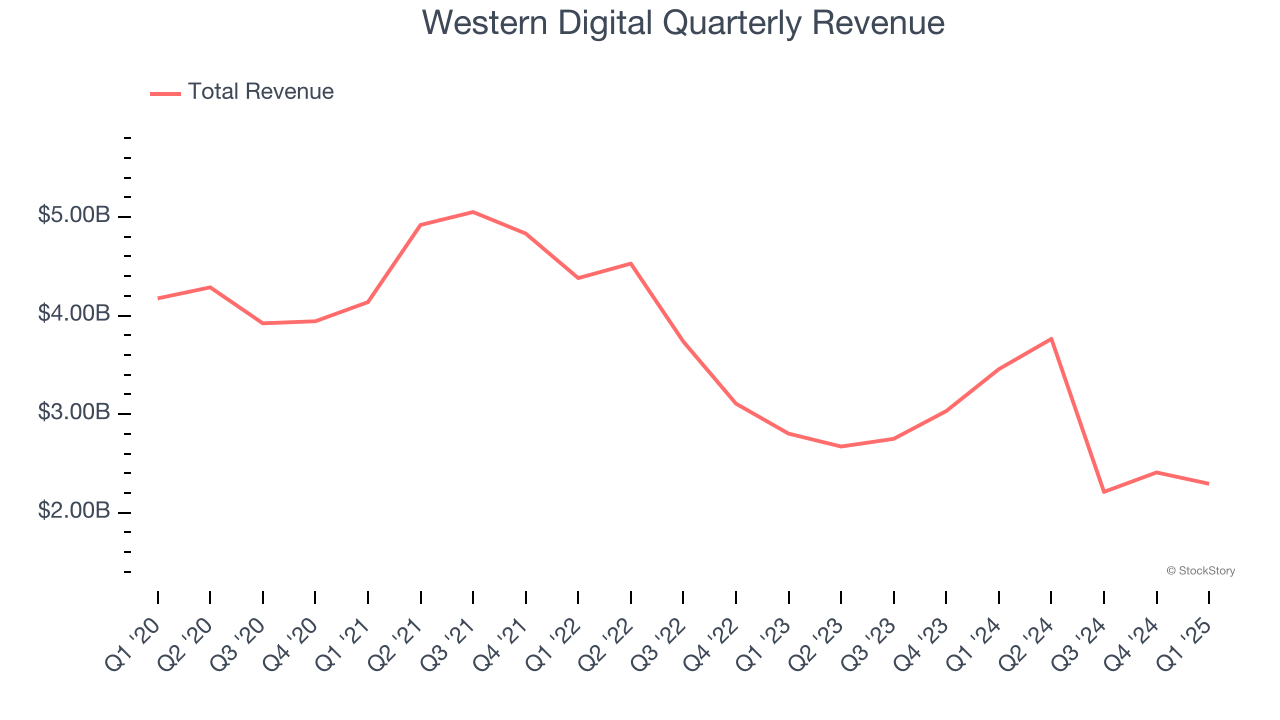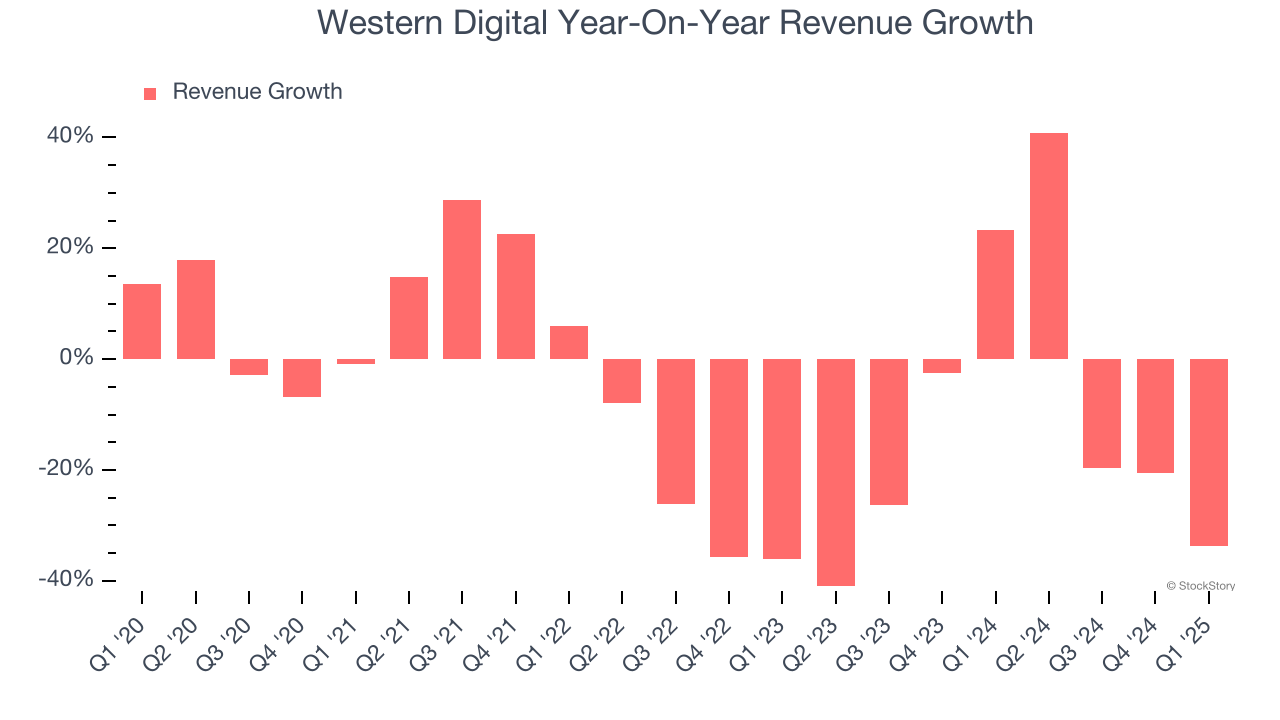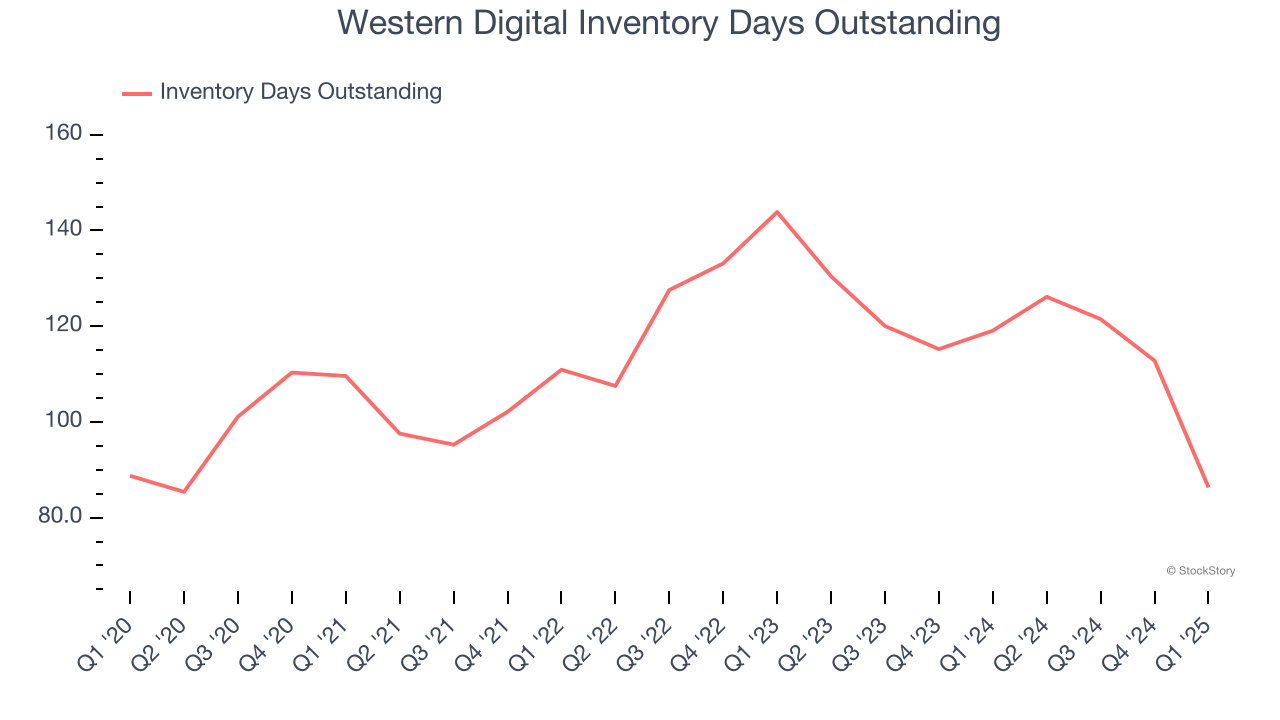
Leading data storage manufacturer Western Digital (NASDAQ: WDC) reported Q1 CY2025 results exceeding the market’s revenue expectations, but sales fell by 33.6% year on year to $2.29 billion. On top of that, next quarter’s revenue guidance ($2.45 billion at the midpoint) was surprisingly good and 5.2% above what analysts were expecting. Its non-GAAP profit of $1.36 per share was 22.7% above analysts’ consensus estimates.
Is now the time to buy Western Digital? Find out by accessing our full research report, it’s free.
Western Digital (WDC) Q1 CY2025 Highlights:
- Revenue: $2.29 billion vs analyst estimates of $2.25 billion (33.6% year-on-year decline, 1.9% beat)
- Adjusted EPS: $1.36 vs analyst estimates of $1.11 (22.7% beat)
- Adjusted Operating Income: $596 million vs analyst estimates of $558.3 million (26% margin, 6.8% beat)
- Revenue Guidance for Q2 CY2025 is $2.45 billion at the midpoint, above analyst estimates of $2.33 billion
- Adjusted EPS guidance for Q2 CY2025 is $1.45 at the midpoint, above analyst estimates of $1.14
- Operating Margin: 33.1%, up from 7.9% in the same quarter last year
- Free Cash Flow was $436 million, up from -$37 million in the same quarter last year
- Inventory Days Outstanding: 86, down from 113 in the previous quarter
- Market Capitalization: $14.13 billion
“Western Digital executed well in its fiscal third quarter achieving revenue at the high end of our guidance range and gross margin over 40%,” said Irving Tan, CEO of Western Digital.
Company Overview
Founded in 1970 by a Motorola employee, Western Digital (NASDAQ: WDC) is a leading producer of hard disk drives, SSDs and flash memory.
Sales Growth
Reviewing a company’s long-term sales performance reveals insights into its quality. Any business can put up a good quarter or two, but many enduring ones grow for years. Over the last five years, Western Digital’s demand was weak and its revenue declined by 7.9% per year. This was below our standards and is a sign of poor business quality. Semiconductors are a cyclical industry, and long-term investors should be prepared for periods of high growth followed by periods of revenue contractions.

We at StockStory place the most emphasis on long-term growth, but within semiconductors, a half-decade historical view may miss new demand cycles or industry trends like AI. Western Digital’s recent performance shows its demand remained suppressed as its revenue has declined by 13.2% annually over the last two years. 
This quarter, Western Digital’s revenue fell by 33.6% year on year to $2.29 billion but beat Wall Street’s estimates by 1.9%. Despite the beat, the drop in sales could mean that the current downcycle is deepening. Company management is currently guiding for a 34.9% year-on-year decline in sales next quarter.
Looking further ahead, sell-side analysts expect revenue to decline by 11.8% over the next 12 months, similar to its two-year rate. While this projection is better than its two-year trend, it's hard to get excited about a company that is struggling with demand.
Today’s young investors won’t have read the timeless lessons in Gorilla Game: Picking Winners In High Technology because it was written more than 20 years ago when Microsoft and Apple were first establishing their supremacy. But if we apply the same principles, then enterprise software stocks leveraging their own generative AI capabilities may well be the Gorillas of the future. So, in that spirit, we are excited to present our Special Free Report on a profitable, fast-growing enterprise software stock that is already riding the automation wave and looking to catch the generative AI next.
Product Demand & Outstanding Inventory
Days Inventory Outstanding (DIO) is an important metric for chipmakers, as it reflects a business’ capital intensity and the cyclical nature of semiconductor supply and demand. In a tight supply environment, inventories tend to be stable, allowing chipmakers to exert pricing power. Steadily increasing DIO can be a warning sign that demand is weak, and if inventories continue to rise, the company may have to downsize production.
This quarter, Western Digital’s DIO came in at 86, which is 26 days below its five-year average. At the moment, these numbers show no indication of an excessive inventory buildup.

Key Takeaways from Western Digital’s Q1 Results
We were impressed by Western Digital’s strong improvement in inventory levels and revenue, EPS, and adjusted operating income beats. We were also excited its quarterly revenue and EPS guidance topped Wall Street’s estimates. Zooming out, we think this was a solid quarter. The stock traded up 8.8% to $44.21 immediately following the results.
Indeed, Western Digital had a rock-solid quarterly earnings result, but is this stock a good investment here? We think that the latest quarter is only one piece of the longer-term business quality puzzle. Quality, when combined with valuation, can help determine if the stock is a buy. We cover that in our actionable full research report which you can read here, it’s free.
